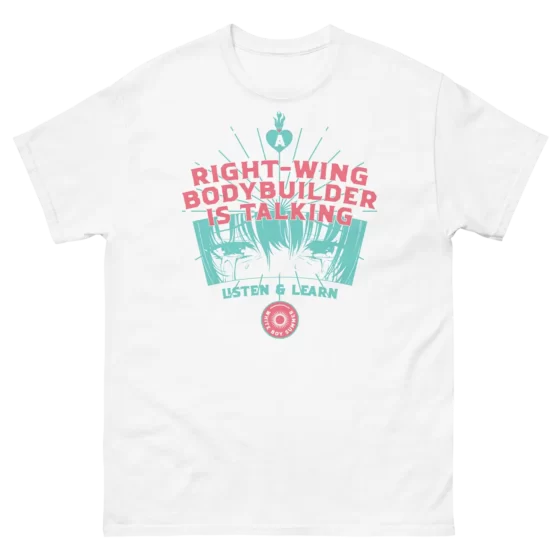The First Battle on Snowshoes
In May 1756, 16 year-old Thomas Brown joined Rogers’ Rangers to fight the French and Indians. Eight months later he got his first taste of battle—and his three years of “uncommon sufferings” followed.
Out of the fog came a horse-drawn sleigh, scratching its way across the ice. The horses huffed and puffed, spouting steam like dragons. Huddled together aboard the sleigh were two Frenchmen, their faces down, shielded from the elements. They didn’t see the seventy four guerrilla fighters crouched among the brush on the shoreline. Watching. Waiting.
It was January 21st, 1757, and the sleigh was making its way across the frozen surface of Lake Champlain shuttling much-needed supplies between the French garrisons at Fort Carillon (known to the English as Fort Ticonderoga) and Fort St. Frédéric (Crown Point) along the border of what is now New York and Vermont. Major Robert Rogers and his band of irregular partisans had been sent from the British Forts George and William Henry (at the southern point of Lake George) to harass the French and gather intelligence.
The French and Indian War had been raging for over a year and a half, ever since the infamous Mingo Half King—working with a twenty two year-old George Washington—murdered an unarmed French diplomat in the backwoods of modern-day Pennsylvania. After a battle on the shores of Lake George in September 1755, the two sides settled in for the long haul and began constructing forts. The Lake Champlain corridor, stretching the nearly two hundred miles from Montreal to Albany, became the war’s primary theater of operations. In January 1757, as Rogers and his men laid in wait for their prey, it remained unknown which side would be able to make the decisive first strike.
Twenty five year-old Robert Rogers started the war as leader of a small New Hampshire militia unit. His eagerness to serve King and Country was undoubtedly aided by a desire to avoid scandal and prison due to his involvement in a counterfeiting ring. His wartime service gifted him a new professional lease on life and to say he pursued it with gusto would be an understatement. Rogers quickly gained a reputation as one of the most skilled scouts in British service. Before long his status was officially recognized and he was ordered to raise a company of hand-picked fighters. By 1757 the one company had grown to four and “Rogers’ Rangers” established themselves as practitioners of a deadly new kind of warfare. They struck quickly and silently in small bands of highly-trained, adept warriors. They were as much survivalists as soldiers, and knew the land and how to use it better than anyone then in British service.
One of Rogers’ Rangers hiding in the snow that day was a sixteen year-old boy from Charlestown, Massachusetts, just outside of Boston. Brown enlisted seven months earlier into the company commanded by Thomas Speakman, a wealthy Bostonian and Harvard dropout. Speakman’s company didn’t observe the strict enlistment standards of Rogers’s initial company and was made up mostly of “Irish Roman Catholics, Sailors, and Spaniards,” according to Massachusetts governor William Shirley—something that likely explains how an underage boy from the suburbs without any frontier experience to speak of found himself in the war’s premier special forces unit. That day would not technically be Brown’s first taste of action—on an earlier scout he had killed an Indian—but it would bring the most close-run battle the Rangers had yet experienced and cue the second, dreadful phase of Brown’s life.
When the sleigh was spotted, Rogers quickly sent his deputy, Lieutenant John Stark, north with twenty men to cut the Frenchmen off while the rest of the rangers would emerge from the woods and trap them from behind. One sleigh would yield little in terms of supplies, but the real value would come from the acquisition of two prisoners and their interrogation. Rogers’s superiors back home were eager to know the exact strength and disposition of the French forces.
But as Rogers, Brown, and the rest of the rangers watched the sleigh and waited for the trap to be sprung, the fog revealed a disheartening secret: one by one, seven more sleighs emerged into view. Rogers must’ve felt his heart hit the ground. He knew it was too late, but he quickly sent his two fastest runners north along the woods to recall Stark and stop the ambush. They wouldn’t make it in time, and Rogers and his men watched as Stark and the other rangers leaped onto the ice and rushed at the sleigh. Now they were committed. Just as the other sleighs began to take notice, Rogers stood up tall, took a giant breath and roared “Head ‘em, boys!”
Rogers, Brown, and the fifty-four rangers still in hiding ran forward as the stunned Frenchman halted and then attempted to flee. The first sleigh was taken by Stark, but the others would not be so easily apprehended. Brown was quick on the major’s heels as he personally took the second sleigh. One of the Frenchmen on board jumped down and started to run toward his comrades. But Brown was quicker and threw him down on the ice and subdued him. Then Brown, and his distraught prisoner, watched as the majority of the French escaped back toward Fort Carillon.
It was now the moment of decision for Major Robert Rogers and his officers. The French sleighs would be back safe at Fort Carillon in mere hours and bring news of the ambush. No doubt the French would quickly dispatch a response force, and Rogers and his men were precariously trapped between Forts Carillon and St. Frédéric.
In the chaos the rangers captured three sleighs and seven prisoners. Rogers, who spoke French, questioned each of them. He learned a few hundred Canadian militiamen, regulars, and Indians were then at Fort Carillon; easily enough to overwhelm and destroy his seventy four men. Brown’s prisoner was one of those questioned, and Brown would’ve been hesitant to let the man out of his sight. He was entitled to a bounty for successfully bringing in a prisoner alive. Added to his current pay, which was already double that of a provincial private, Brown was looking at a substantial payout. But after questioning Brown’s prisoner and before he took his leave, Rogers turned to Brown and made one thing clear: If they were attacked, it was his responsibility to immediately kill the prisoner, lest he escape and give information to the enemy.
Rogers convened a council of war and gathered his officers about him. What was to be done? The situation was dire and the options poor. They could return to the previous night’s camp, about three miles southwest of their current position, to regroup, dry their guns (the sleeting weather was rendering their muskets and powder useless), and return to Fort William Henry the same way they came, avoiding Fort Carillon to the east. Or they could cross the ice to the other side of Lake Champlain, blaze a new trail, and hope to pass unnoticed with the French to the west. Neither was ideal. If the French moved quickly enough they could discover their previous path and launch an ambush. If they crossed the lake they would have to trudge through thick snow and underbrush on an unbroken path. It would slow them down, potentially fatally. Rogers’s officers pushed to cross the lake. But they were overruled. Yes, retracing their steps was a high-risk move, but it was ground they had tread before and so they would be able to move much more quickly. Additionally, the fires at the previous night’s campsite could be relit so that their guns and powder could be dried should they be needed in a battle with the enemy.
With an understandable amount of hesitation, the rangers gathered their materiel and prisoners, fastened their snowshoes, and marched southwest. They travelled single-file, so as to stamp down the snow and conceal their numbers. Even in the rain, with cumbersome snowshoes, hefty packs, and a few prisoners, the trek back was made in good time. The rangers returned to the previous night’s camp in just over an hour.
Meanwhile, panicked men and riderless horses stumbled back through the gates of Fort Carillon. The fort’s commander, Paul-Louis Dazemard de Lusignan, called up around one hundred and fifty regulars, militia, and Indians (mostly Ottawas) who were present and ready for action. He sent them out under the command of Captain de Basserode and Lieutenant d’Astrel (of the Regiment de Languedoc), Captain de La Granville (of the Regiment de La Reine) and Charles-Michel Mouet de Langlade, half-pay ensign of the provincial militia. By this time in the war, Rogers was a constant thorn in Lusignan’s side. This latest ambush had to be Rogers and this was Lusignan’s chance to finally catch the damned rascal that had been causing him so much trouble.
If any man was to prove himself a match for Rogers on the battlefield, it was Langlade, commander of the militia and the man at the head of the Indians. A métis, with a French father and an Indian mother, Langlade lived his life on the edge of civilization, with one foot each in French and native societies. Like Rogers, Langlade was a practicer of frontier warfare par excellence. He was instrumental in adopting the Indian way of war and putting it to deadly use against the English and their native allies. Just a few years earlier he had helped lead a group of Ottawa warriors against a Miami Indian chief named Memeskia. He attacked the village, killed almost everyone, including Memeskia, then boiled and devoured him in front of the survivors.
As Langlade and the soldiers hastily poured out of the fort, Lusignan no doubt let out a sigh of relief. Who better to send to destroy your enemy than a man so ravenous in battle; one who had known the taste of human flesh—and enjoyed it?
***
At the campsite the rangers relit their smoldering embers and dried their guns. The rain continued to take a toll. Damp powder and dirty muskets would do them no good. The typical flintlock was difficult to maintain even in the most perfect of conditions. In the weather they faced, they could quickly become useless. Each of the rangers knelt down to fasten his snowshoes on tightly. More resembling a modern tennis racket than a modern snowshoe, the snowshoes they used nevertheless proved incredibly helpful in the snow. Without them their feet would sink deep and it would require herculean effort to walk and lead to certain exhaustion. Snowshoes and dry powder proved invaluable in the moments to come.
Leaving the campsite, the rangers resumed their single-file march. Rogers was at the front with his men, Captain Speakman in the center with Thomas Brown, and Lieutenant Stark in the rear with the prisoners. At about two o’clock in the afternoon, Rogers crested a small hill and led his men down into a 250 foot-wide ravine bisected by a small stream. On the other side was another slope about equal in size to the one behind them. The men breathed as best they could in the cold air and chopped the toes of their snowshoes into the ground making makeshift steps.
Gunfire. The French and Indians were spread out in a horseshoe pattern at the top of the slope’s western bank, the sun shining down behind their backs and into the rangers’ eyes. They waited until Rogers and his men were almost on top of them before they let loose a deadly volley. A musket ball grazed Rogers in the head. A Lieutenant Kennedy, one of his chief deputies, was instantly killed. Brown was shot in the abdomen.
At the rear, Stark quickly put his men into action and formed a rear-guard atop the first hill. His rangers took cover behind trees and began to pour a steady fire into the French attackers. Immediately after he was shot, Brown beat a hasty retreat back across the stream and up the opposite hill toward where the prisoners were huddled. In accordance with his orders, he ran up to his prisoner and dutifully “knock’d him on the head and killed him.”
The first volley was not as effective as the French had hoped. In the haste of pursuing Rogers and his men, they had allowed the snow and rain to dampen their powder. Many of the Frenchmen suffered misfires. Realizing this, the French regulars fixed their bayonets and the Indians drew out their tomahawks and they charged downhill with all their might. The French regulars, lacking snowshoes, sank deep into the snow, but at the stream they caught up with their enemy and a hand-to-hand melee ensued. It was here Captain Speakman, Brown’s direct superior, was gravely wounded. Under the cover of the other rangers’ fire he crawled as best he could toward safety.
Beaten back from their bayonet charge, the French attempted a flank attack. Brown, returning to the battle from his dreadful deed, moved to take cover behind a large rock. As he did, an Indian sprung out from the other side. Brown stumbled backward and broke his snowshoes off in the snow. He desperately tore the mangled mess off his feet, but was obliged to let his shoes go with them. The Indian threw his tomahawk at Brown, but missed, and another ran forward to grab him. Brown, gut-shot and shoeless, was “happily” able to escape and retreat to the center of the ranger battle-line as they fended off the flank attack. He took cover behind a pine tree and fired his musket, according to him about six or seven times, before an enemy ball smashed into his gun and broke it in two. With no musket to defend himself, Brown hid as best he could and prayed for salvation. After half an hour of terror he was shot in the knee.
Unarmed, shoeless, and with bullet wounds to his abdomen and knee, Brown decided to make a desperate crawl to the supposed safety of the ranger rear. As he set off, grunting and moaning and leaving a trail of blood behind him, one more musket ball lodge itself into his shoulder with a mighty wallop. Miraculously, Brown made it to safety and laid himself down in the snow next to a critically wounded Captain Speakman and one “Mr. Baker,” a volunteer from the 44th Regiment of Foot who had been wounded during the French flanking attempt.
Darkness fell. The French and Indians and the English occupied opposing hillsides. The ambush became a stalemate and each side offed occasional pot-shots whenever heads emerged from behind trees. The ravine was a no-man’s-land littered with the dead and dying. Sometime during the action, Rogers was shot in the wrist. One of his comrades cut off his queue and offered it as a tourniquet. As the sun set, Rogers gave the order to cease firing and conserve ammunition. The moans from the wounded abandoned in no-man’s-land began to go quiet, one-by-one, as the Indians crept out in the darkness to slaughter and scalp them. The French soldiers called out in English: “Submit or die. Reinforcements are coming. The Indians are going to kill you all.” They even addressed Rogers by name and told him his gig was up. If he surrendered he could expect fair treatment. If not he would be given to the Indians and “cut to pieces without mercy.” He responded with confidence and “told them our numbers were sufficient, and that we were determined to keep our ground as long as there were two left to stand by each other.”
Privately, Rogers knew time was not on his side. Additional troops from Fort Carillon were doubtless on their way and his numbers were in fact not sufficient to hold out much longer. Stark, who during the battle had yelled that he would personally shoot any ranger who dare turn his back on the enemy, made his way around the hill, checking on the men and inspecting the wounded. He and Rogers both knew the unfortunate truth. If they were to escape alive, those too wounded to walk would have to be left behind. When Stark came upon Brown, Speakman, and Baker, he examined them stoically. The nature of Speakman and Baker’s injuries is not known, but Brown, laying there shivering with no shoes and three bullet wounds, was a sorry sight. Captain Speakman might’ve asked for an update on the situation and Stark might’ve grumbled that Rogers had it under control. But Speakman, as an officer and one of Rogers’s chief subordinates, must have known the reality facing them.
Stark disappeared into the darkness and stillness of the night to rejoin Rogers. Brown, Speakman, and Baker heard the occasional cough; the rare discharge of a weapon; enemy taunts. Then the quiet grew. And grew. Suspiciously so. Unbeknownst to the wounded, Rogers had taken the well men and slipped away to safety, neglecting to inform them of his plan lest they alert the enemy in their desperation.
Thomas Brown later wrote about what happened next:
“[We] made a small fire and sat about half an hour, when looking round we could not see any of our men; Captain [Speakman] called to Major Rogers, but received no answer, except from the enemy at some distance; upon this we concluded our people were fled.
All hope of escape now vanish’d.”
The First Battle on Snowshoes, as the ambush became known, was the worst day of young Thomas Brown’s life and set off three years of “uncommon sufferings.” Captured the next day, he soon endured abuse at the hands of Indians, the torture and murder of friends, disease, blistering cold, near starvation, and flirtation with cannibalism.
In January 1760, at the conclusion of his trials and terrors, eighteen year-old Brown returned home to Charlestown and penned a brief account of his experience. For over two hundred and sixty years it has been out-of-print. But now, as of July 2024, it is offered once again to the public by Frontier Thesis Press.
Brandon Quintin is the publisher and creative director of Frontier Thesis Press (frontierthesispress.com). You can find his Substack newsletter at frontierthesispress.substack.com and follow him on X at @BrandonMQuintin.
































